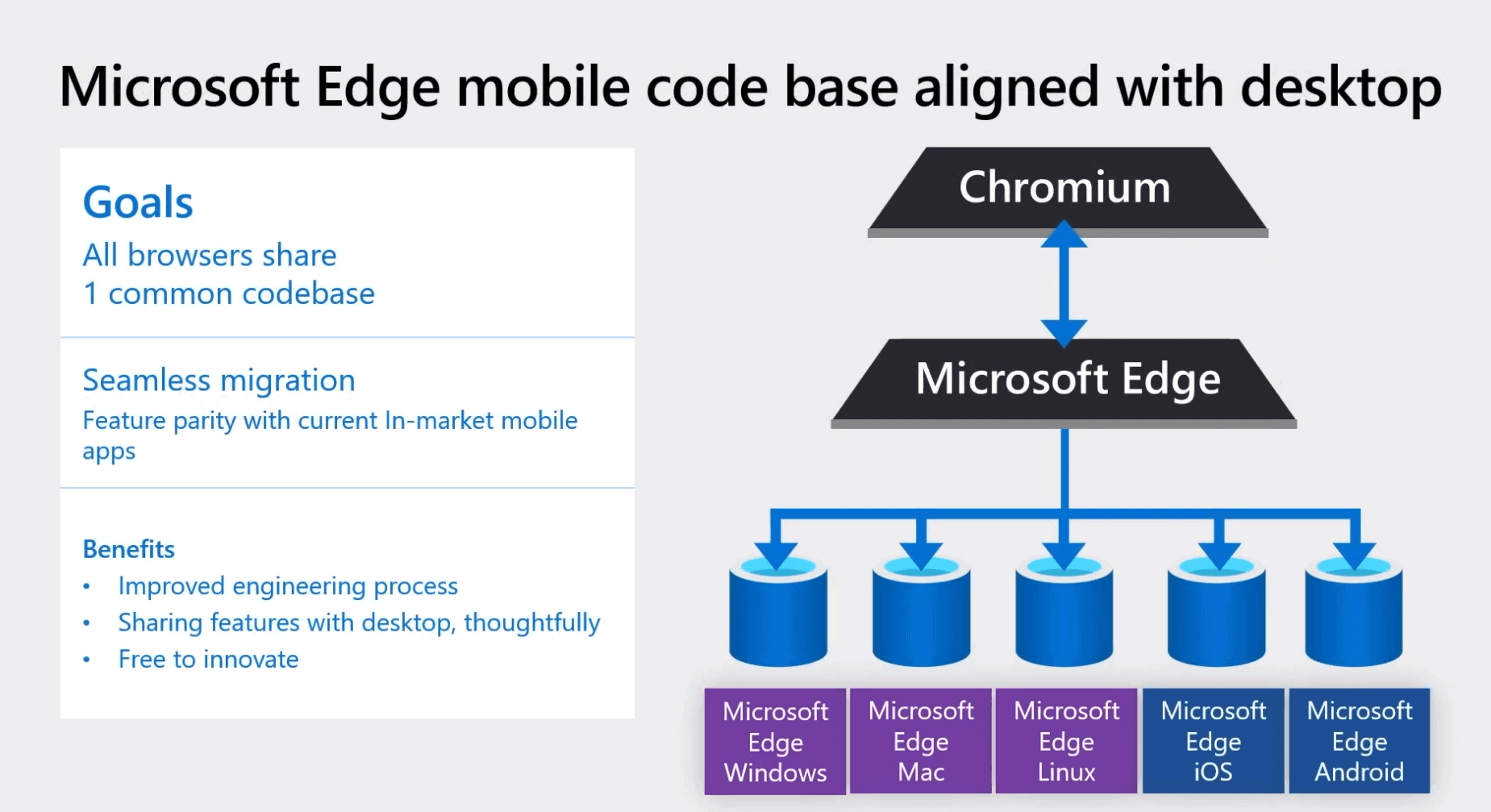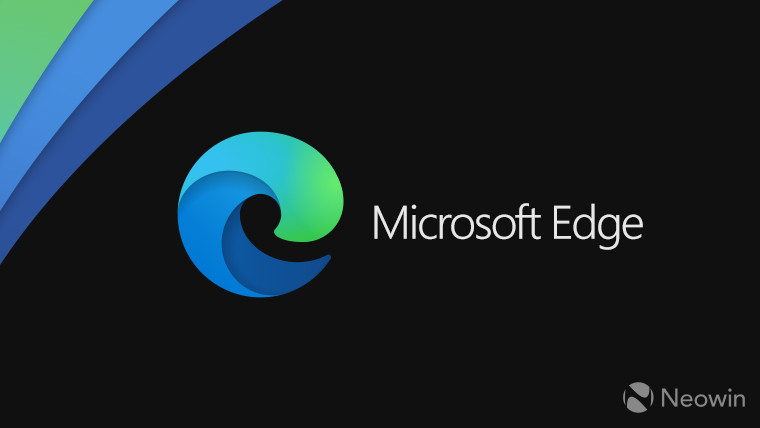Remote debug live content on an Android device from your Windows or macOS computer. The following tutorial page teaches you how to complete the following actions.
The current version of Microsoft Edge for Android is based on Chromium 77, which was released back in August 2019. Other Chromium-based browsers are now using Chromium 87, released in November 2020. Sync Chromium Edge Favorites with the Edge App on Android. To get started, launch the Edge app on your Android device and tap the options button in the lower-right corner and choose “Settings. Microsoft Edge Chromium is Microsoft's new Chromium-based browser. It is intended to supersede Internet Explorer and the older version of Microsoft Edge based on EdgeHTML. This new version of Microsoft Edge offers new personalization tools, including a dark mode, as well as support for new extensions. The Microsoft Edge browser for Android is getting a new feature, called Collections, to make working across multiple devices much easier. That helps to set Edge well apart from Chrome. In addition to the fact that it now matches Chrome in terms of performance, Microsoft Edge browser for Android allows you to group bookmarks and files, switch from browsing on mobile to/from PC and continue right where you left off on the browser, so your work doesn’t get messed up because you needed to drop your smartphone for your laptop, or vice versa.
- Set up your Android device for remote debugging, and discover it from your development machine.
- Inspect and debug live content on your Android device from your development machine.
- Screencast content from your Android device onto a DevTools instance on your development machine.
Note
Remote debugging the Microsoft Edge app on iOS devices is not currently supported. The following guide is specifically focused on remote debugging Microsoft Edge on Android devices.If you have a macOS device, follow the Brightcove Debugging guide to remotely debug Microsoft Edge on an iOS device using Safari. For more information about the Web Inspector tool in Safari, navigate to Safari Web Development Tools.
Step 1: Discover your Android device
The workflow below works for most users. For more help, navigate to Troubleshooting: DevTools is not detecting the Android device section.
Open the Developer Options screen on your Android. For more information, navigate to Configure On-Device Developer Options.
Choose Enable USB Debugging.
On your development machine, open Microsoft Edge.
Navigate to the
edge://inspectpage in Microsoft Edge.Connect your Android device directly to your development machine using a USB cable. The first time you try to connect, a prompt should be displayed about DevTools detecting an unknown device. Accept the Allow USB Debugging permission prompt on your Android device.
If the model name of your Android device is displayed, then Microsoft Edge has successfully established the connection to your device. Continue to the Step 2 section.
Troubleshooting: DevTools is not detecting the Android device
Use the following tips to help you troubleshoot the correct settings for your hardware.
- If you are using a USB hub, try connecting your Android device directly to your development machine.
- Try unplugging the USB cable between your Android device and development machine, and then re-plugging your USB cable. Complete the task while your Android and development machine screens are unlocked.
- Make sure that your USB cable works. You should be able to inspect files on your Android device from your development machine.
Use the following tips to help you verify that your software is set up correctly.
- If your development machine is running Windows, try manually installing the USB drivers for your Android device. For more information, navigate to Install OEM USB Drivers.
- Some combinations of Windows and Android devices (especially Samsung) require additional settings. For more information, navigate to DevTools Devices does not detect device when plugged in.
Use the following tips to help you troubleshoot if the Allow USB Debugging prompt is not displayed on your Android device.
Disconnecting and then re-connecting the USB cable while DevTools is in focus on your development machine and your Android homescreen is showing.
Note
The prompt is displayed if your Android or development machine screens are locked.
Updating the display settings for your Android device and development machine so that each never goes to sleep.
Setting the USB mode for Android to PTP. For more information, navigate to Galaxy S4 does not show Authorize USB debugging dialog box.
Choose Revoke USB Debugging Authorizations from the Developer Options screen on your Android device to reset it to a fresh state.
If you find a solution that is not mentioned on this page or in DevTools Devices does not detect device when plugged in on Stack Overflow, please add your solution to the Stack Overflow question.

Step 2: Debug content on your Android device from your development machine
Edge Chromium Apk Download
Open Microsoft Edge on your Android device.
Navigate to
edge://inspect, the model name of your Android device is displayed, followed by the device serial number. Below that, the version of Microsoft Edge running on the device should be displayed, with the version number in parentheses. Each open Microsoft Edge tab gets a unique section. You may interact with that tab from a section.In the Open tab with url text box, enter a URL and then choose Open. The page opens in a new tab on your Android device.
Choose inspect next to the URL that you just opened. A new DevTools instance opens.
More actions: focus, refresh, or close a tab
Choose focus tab, reload, or close next to the tab that you want to focus, refresh, or close.
Inspect elements
Navigate to the Elements tool of your DevTools instance, and hover on an element to highlight it in the viewport of your Android device.
You may also select an element on your Android device screen to select it in the Elements tool. Choose Select Element () icon on your DevTools instance, and then select the element on your Android device screen.
Note Haproxy for windows download.
Select Element is disabled after the first selection, so you must re-enable it every time you want to use the feature.
Screencast your Android screen to your development machine
Choose Toggle Screencast () icon to view the content of your Android device in your DevTools instance.
You are able to interact with the screencast in the following ways.
- Chooses are translated into taps, firing proper touch events on the device.
- Keystrokes on your computer are sent to the device.
- To simulate a pinch gesture, hold
Shiftwhile dragging. - To scroll, use your trackpad or mouse wheel, or fling with your mouse pointer.
Note
Use the following tips to help you screencast.
- Screencasts only display page content. Transparent portions of the screencast represent device interfaces, such as the Microsoft Edge address bar, the Android status bar, or the Android keyboard.
- Screencasts negatively affect frame rates. Disable screencasting while measuring scrolls or animations to get a more accurate picture of the performance of your page.
- If your Android device screen locks, the content of your screencast disappears. Unlock your Android device screen to automatically resume the screencast.

Edge Chromium Android Flags
Getting in touch with the Microsoft Edge DevTools team

Use the following options to discuss the new features and changes in the post, or anything else related to DevTools.
- Send your feedback using the Send Feedback icon or select
Alt+Shift+I(Windows, Linux) orOption+Shift+I(macOS) in DevTools. - Tweet at @EdgeDevTools.
- Submit a suggestion to The Web We Want.
- To file bugs about this article, use the following Feedback section.

Note
Portions of this page are modifications based on work created and shared by Google and used according to terms described in the Creative Commons Attribution 4.0 International License.
The original page is found here and is authored by Kayce Basques (Technical Writer, Chrome DevTools & Lighthouse).
This work is licensed under a Creative Commons Attribution 4.0 International License.
